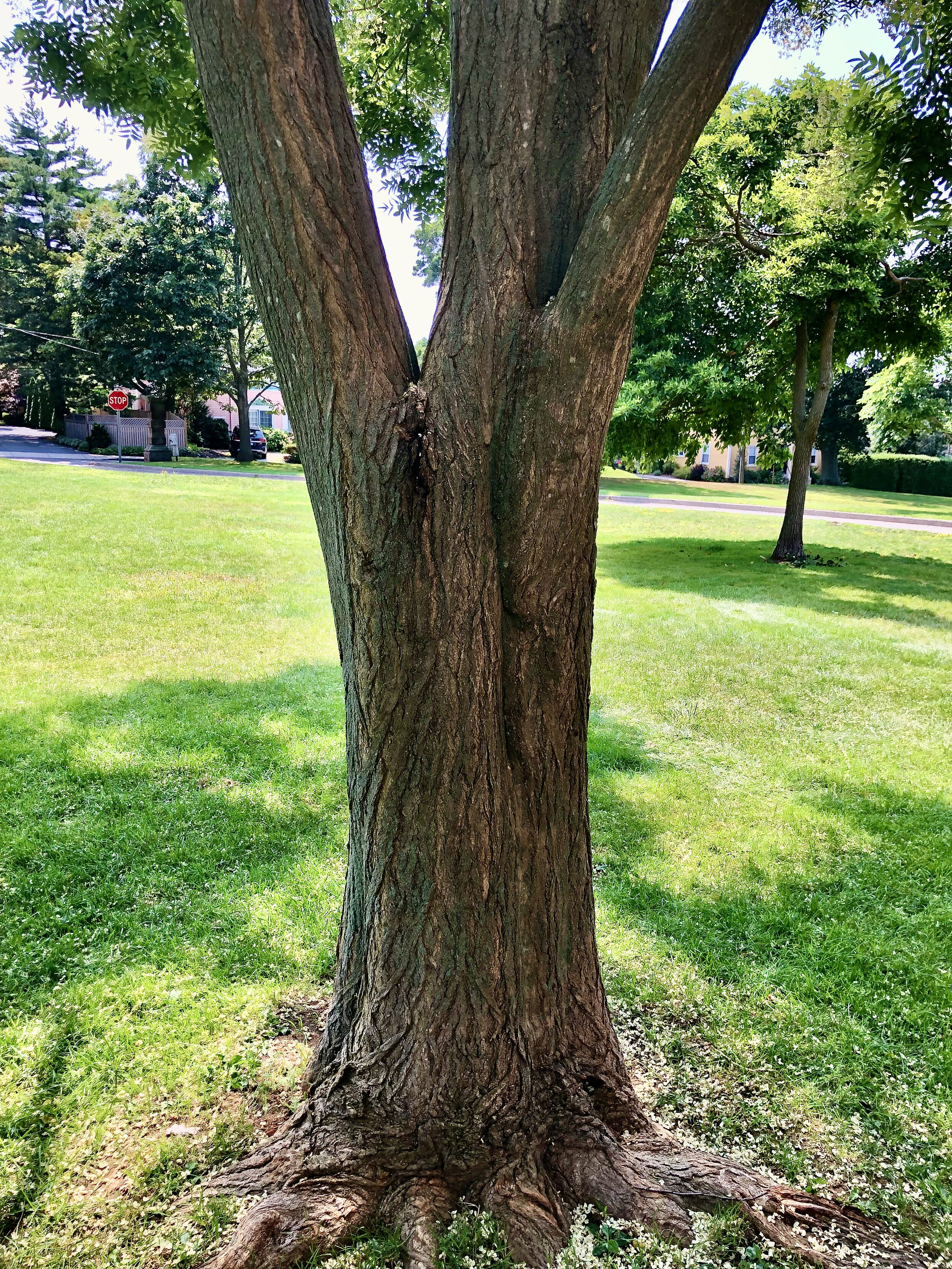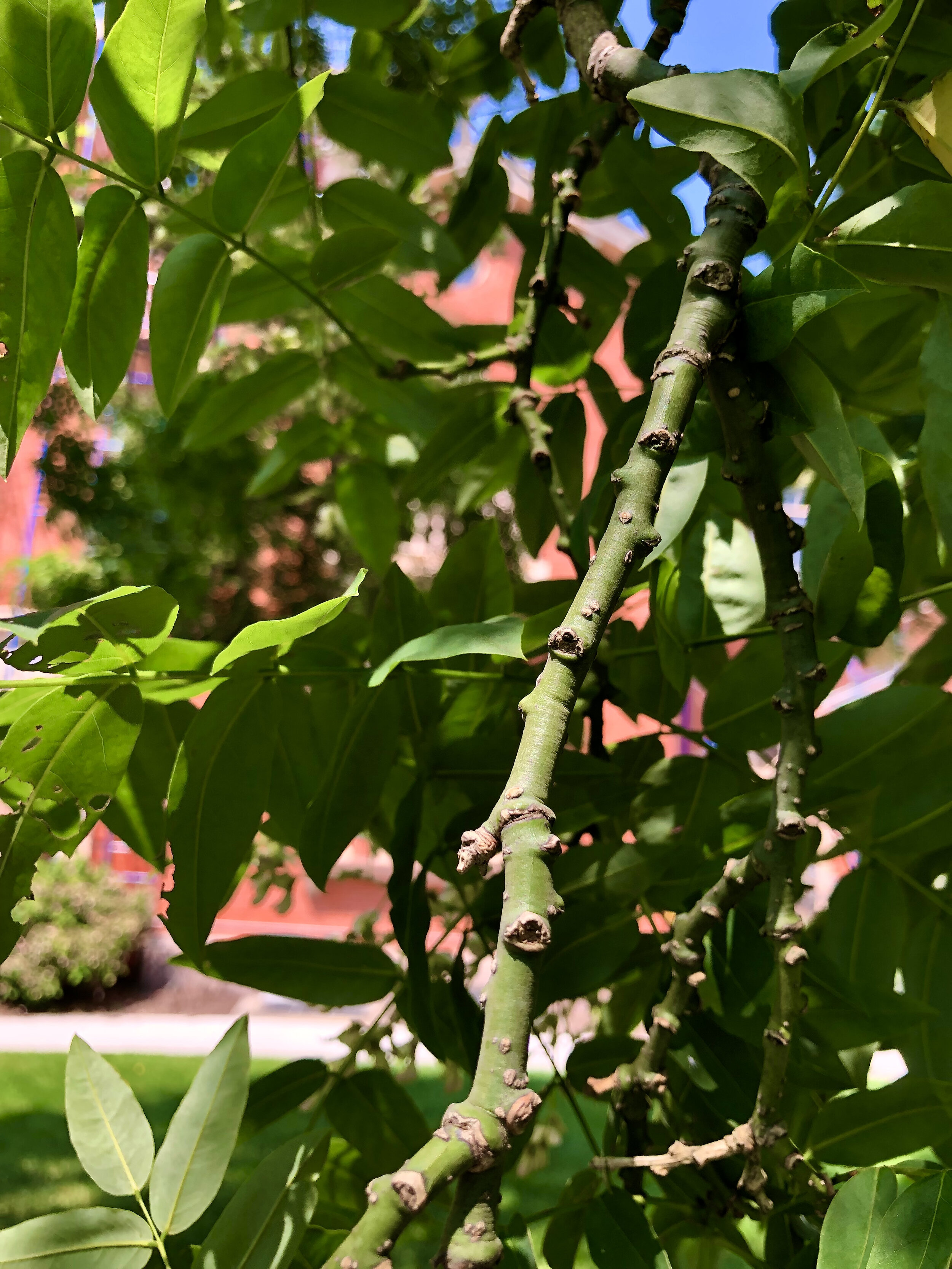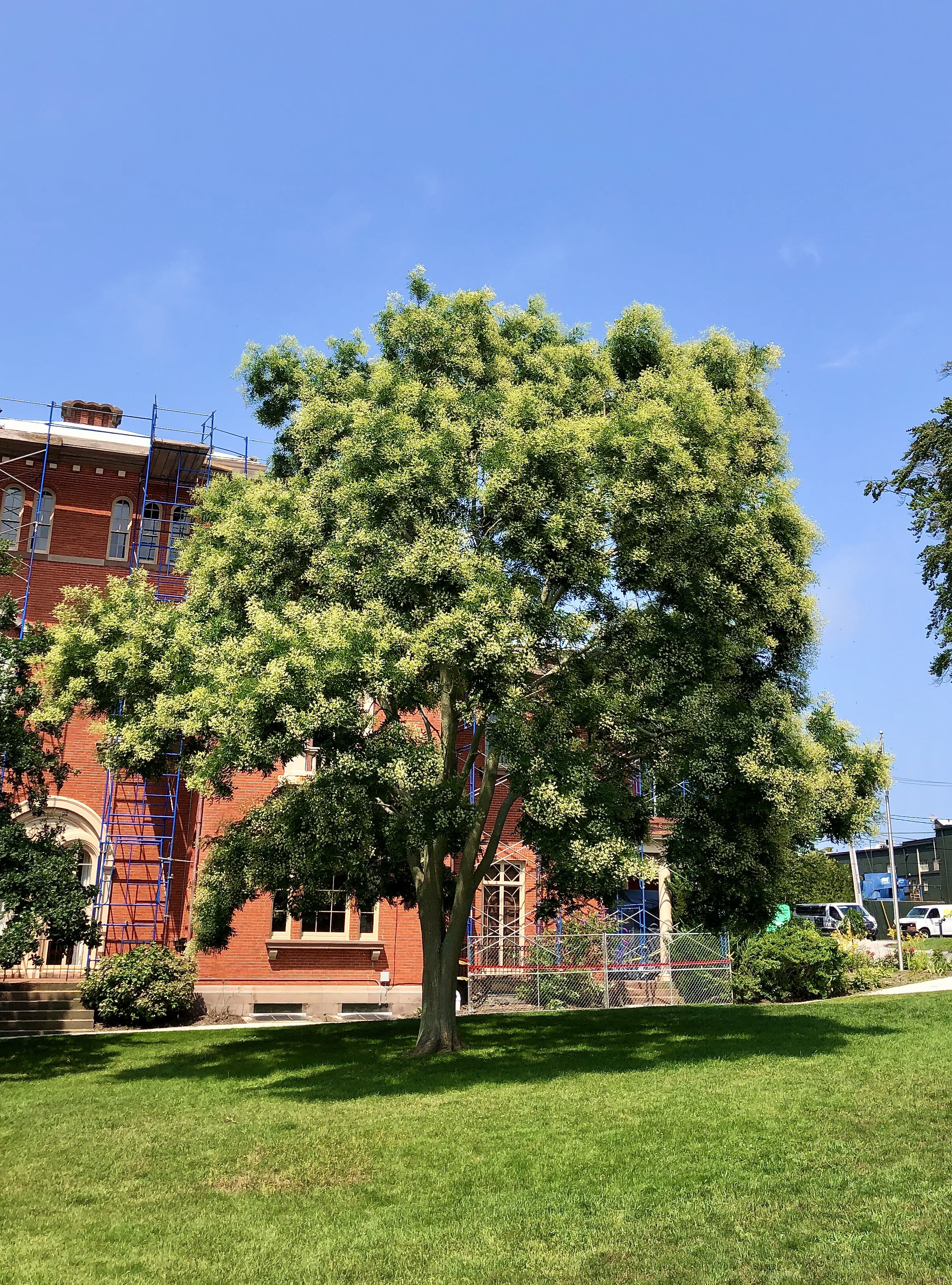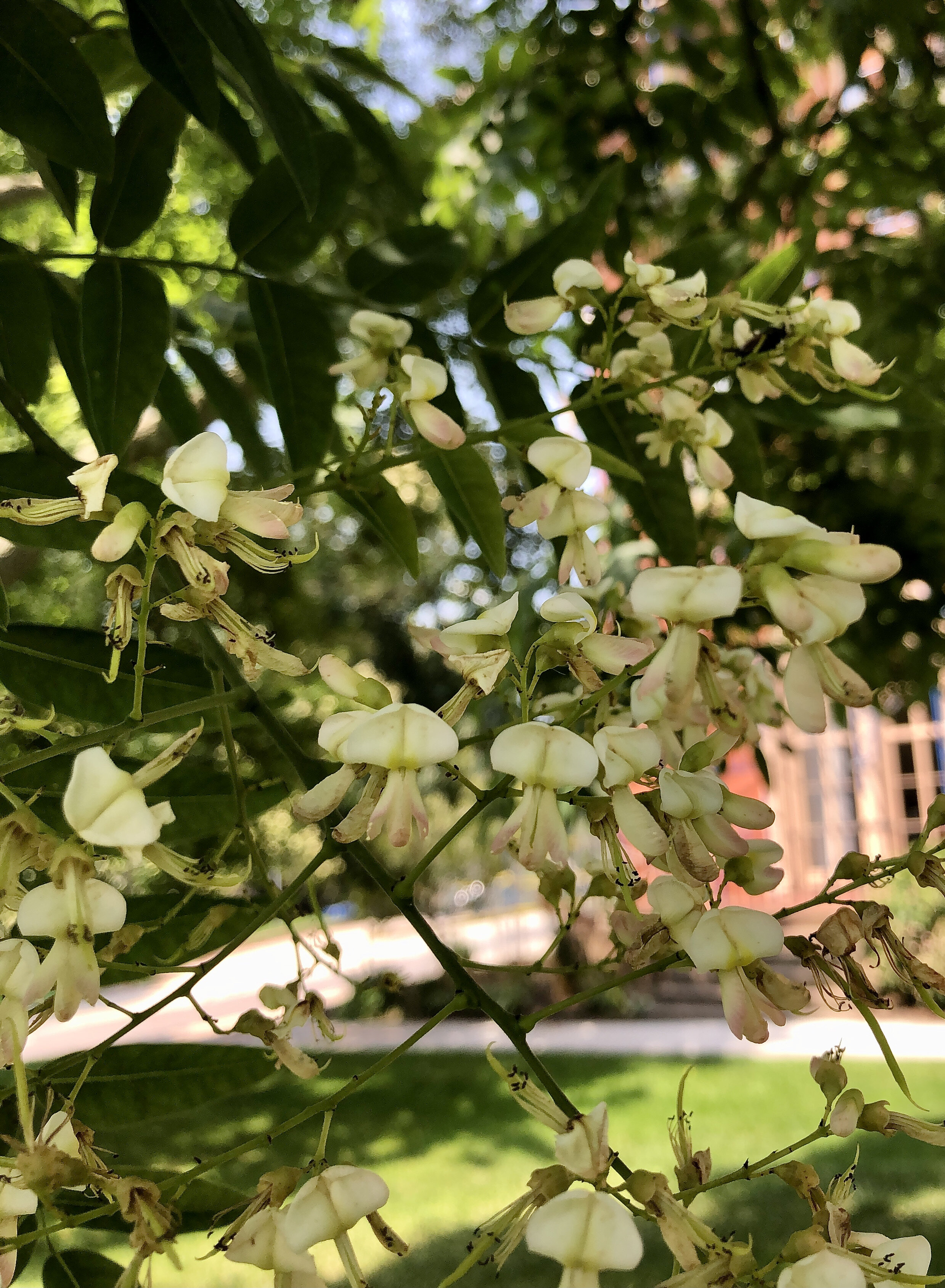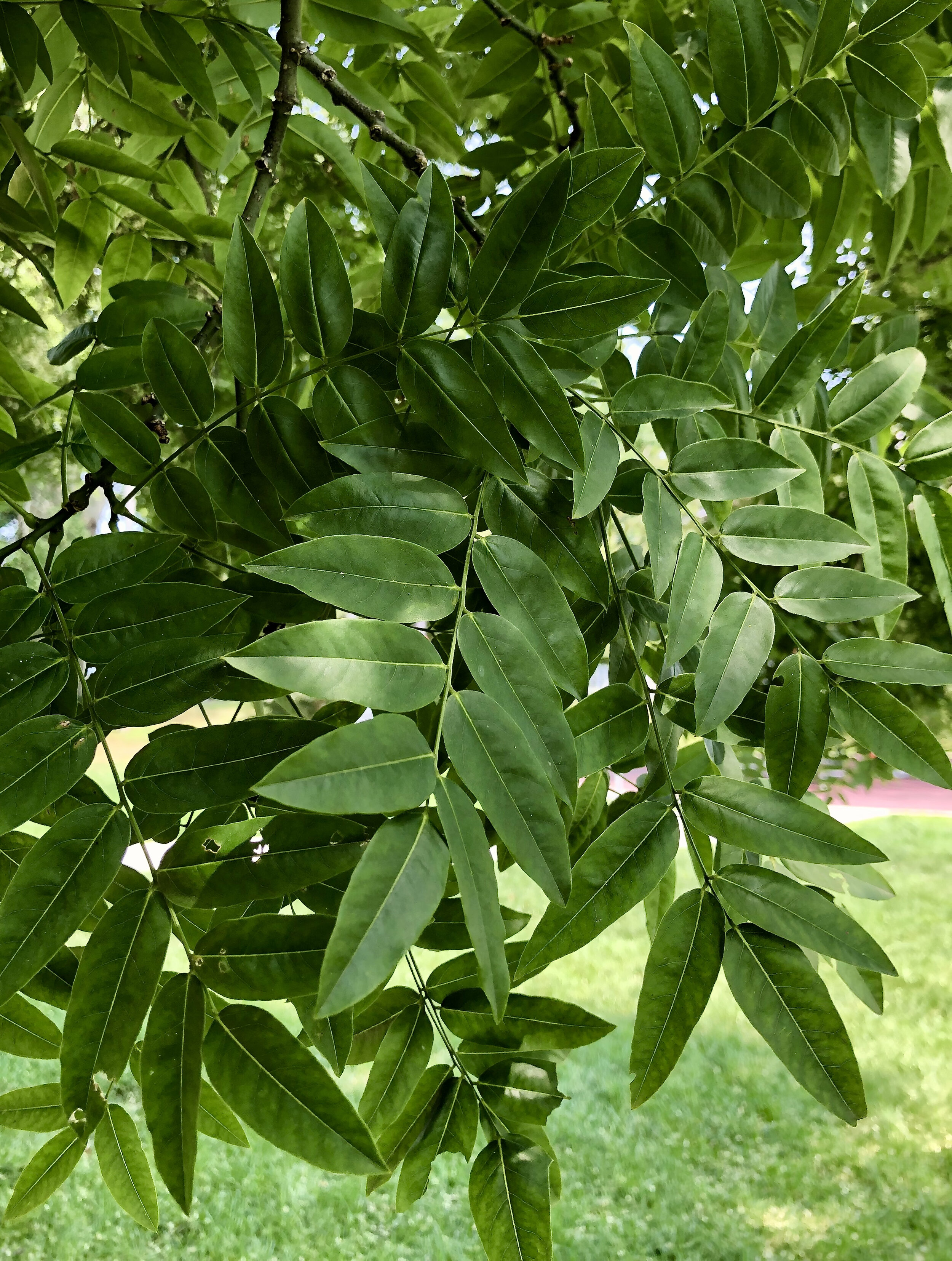Chinese scholar tree
Styphnolobium japonicum
Formerly Sophora japonica, also sometimes referred to as the Japanese pagoda tree, adjacent to the Edward King House in Aquidneck Park. Stunning in flower, former observations have led me to believe this tree is an alternate year bloomer, or blooming heavy one year followed by little to no flowers the next. Well, this certainly is an on year, as the tree is overwhelmed with showy panicles. Bees, flies, and other pollinators have traveled from the corners of Newport, zooming around excitedly, knowing they’ve hit the jackpot of blooms. It is the stand-alone flowering tree in Newport right now, it will be the last of the shade trees to bloom this year.
Despite its species name, Styphnolobium japnonicum is not native to Japan, but rather China and Korea. The Chinese scholar tree is a member of the Fabaceae family, the legumes, or the pea family. Trees mature to 50-60 feet in height, with a dense, tightly rounded habit. Old trees may be more open but will maintain a rounded form. The tree is easily identified with its beautiful olive-green stems on up to six-year-old growth. Slightly fragrant flowers borne on 12-16 inch panicles in August mature into clusters of lime green, pea-like pods. This confirms its classification as a legume; kind of goofy looking and always makes me smile when witnessed. Compound leaved with 7-17 pointed ovate leaflets, emerging late in the spring and often retained into November with little or no showy fall color. Bark is gray brown with shallow furrows. Pagodas are often used in urban situations and commonly selected as street trees. While they have good size and form for this use, they don’t always tolerate the urban conditions well. I have observed street plantings in Providence and Newport that are struggling; probably a plant better suited for stress free environments. A small weeping form has been cultivated for generations. Venerable weeping specimens can be found around Newport and Aquidneck Island, some over 150 years old, only reaching about 15 feet tall.

